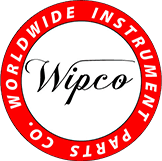 ExpandAerospace CNC machining involves producing components and parts specifically for assembling aircraft and spacecraft. The precision parts, assemblies, and kits produced with aerospace CNC machining require tighter tolerances and often involve difficult-to-machine materials—like Kovar and titanium—when compared to ordinary CNC machining. This is because aerospace parts must work properly without any risk of failure. Aerospace CNC machining can produce parts such as bushings, hinges, clamps, and other custom components.
ExpandAerospace CNC machining involves producing components and parts specifically for assembling aircraft and spacecraft. The precision parts, assemblies, and kits produced with aerospace CNC machining require tighter tolerances and often involve difficult-to-machine materials—like Kovar and titanium—when compared to ordinary CNC machining. This is because aerospace parts must work properly without any risk of failure. Aerospace CNC machining can produce parts such as bushings, hinges, clamps, and other custom components.
This guide to aerospace machining will discuss the importance of CNC machining, the common materials used, the unique challenges of aerospace machining, and how Worldwide Instrument Parts Company (WIPCO) can help.
The Importance of CNC Machining in Aerospace Parts Manufacturing
CNC machining is used across various industries to produce parts and components with a high level of precision that’s difficult to achieve with traditional manufacturing processes. One of the most critical applications of CNC machining is in the aerospace industry, where functionality, safety, and reliability are priorities. A single faulty component can lead to millions in losses as well as loss of human life.
CNC machining can meet the aerospace industry’s stringent safety standards and tight tolerance requirements. It can eliminate human error by using automation and computerization. Aerospace CNC machines are programmed on 3D computer-aided design (CAD) files that digitize the whole component production process. Aerospace manufacturers can achieve tolerances down to 0.002 mm, and state-of-the-art inspections and post-processing services ensure every part is flawless.
Materials Used in Aerospace CNC Machining
Depending on the aircraft component, the materials used for aerospace machining can vary. Metals, high-performance plastics, and composites are the most popular types of materials. When determining the best material for your aerospace application, consider each option’s strength, durability, weight, heat resistance, and other characteristics.
How CNC Machining Is Used in Aerospace Applications
From aviation to space exploration, CNC machining benefits the aerospace industry by more than just producing high-performance parts. Aerospace CNC machining also allows research and development to excel quickly by creating and testing new concepts and making rapid revisions that would otherwise be impossible. CNC machining is used in aerospace applications throughout the design and manufacturing process of rocket ships and aircraft components to deliver the extreme precision required. CNC machining provides the accuracy needed for quality aircraft parts, from components in aviation navigation systems to landing gears to passenger planes to fighter jets.
Aerospace Machining Considerations and Challenges
While CNC machining can overcome most manufacturing limitations in the aerospace industry, there are some challenges aerospace CNC machining companies must overcome to be successful.
Part Deformation
With weight being a major factor in aircraft parts, producing lightweight components is essential. These components often contain thin webs, walls, and lattices. The high cutting force and extreme heat used in aerospace CNC machining can damage these structures and lead to part deformation.
Complex Parts
The nature of the aerospace industry requires parts with complex geometries and very tight tolerances. Thus, companies should work with aerospace manufacturers that offer a variety of materials and processes for your needs.
On-Time Delivery and Quality
Generally, in the aerospace industry, about 80% of orders arrive at their intended destination on time. However, 25% of these on-time parts do not meet quality standards. Many aerospace companies struggle with working with low-cost vendors that offer cost-effective prices and fast turnarounds but cannot deliver on these timelines with the required quality. As a result, many companies end up missing deadlines and paying more than if they had worked with higher-cost vendors in the first place.
6 Ways to Overcome Aerospace Machining Challenges
To overcome these common aerospace machining problems, work with an aerospace manufacturer that can offer:
- Simulation technology: By using simulation technology in their CNC system, manufacturers can minimize machining errors.
- Various configuration tools: Your manufacturer should be maximizing the full potential of their CNC machining tools to deliver the best possible parts.
- Reduced preparation time: They should also design all CNC fixtures correctly to reduce preparation time and improve reliability and efficiency.
- Specialized production lines: The manufacturer should also optimize their production lines by product type or features to maximize output.
- Scalability: With high-speed milling and Swiss machining equipment, aerospace manufacturers should be able to quickly scale your production as needed.
- The highest industry standards: A reputable aerospace manufacturer should have certain quality control certifications, like AS9100D and ISO 9001:2015, to ensure their aerospace CNC parts meet or exceed industry standards.
Aerospace Machining Services From WIPCO
CNC machining is essential in the aerospace industry for meeting the high precision and safety standards required for aviation and spacecraft components.
As an ISO 9001:2015 and AS9100D certified specialty manufacturer, Worldwide Instrument Parts Company (WIPCO) produces precision-machined metal parts for the aerospace and other industries. Depending on part specifications and features, our equipment can machine parts from 0.030” to 15” in diameter and up to 35” in length, with a tolerance of ±0.0002”.
From our 15,000-square-foot climate-controlled facility, our skilled machinists use state-of-the-art CNC mills, lathes, and screw machines and advanced, up-to-date CAD/CAM software to produce exceptional parts customers expect and deserve. We specialize in working with the most difficult materials to machine, such as high-temperature superalloys. In fact, our vast experience machining superalloys is the primary reason why our customers return to us every year.
Contact us to learn more about our aerospace CNC machining services, or request a quote for your project today.
